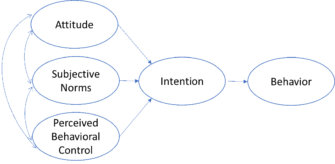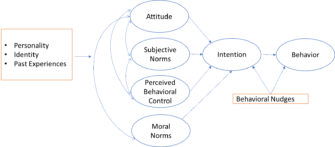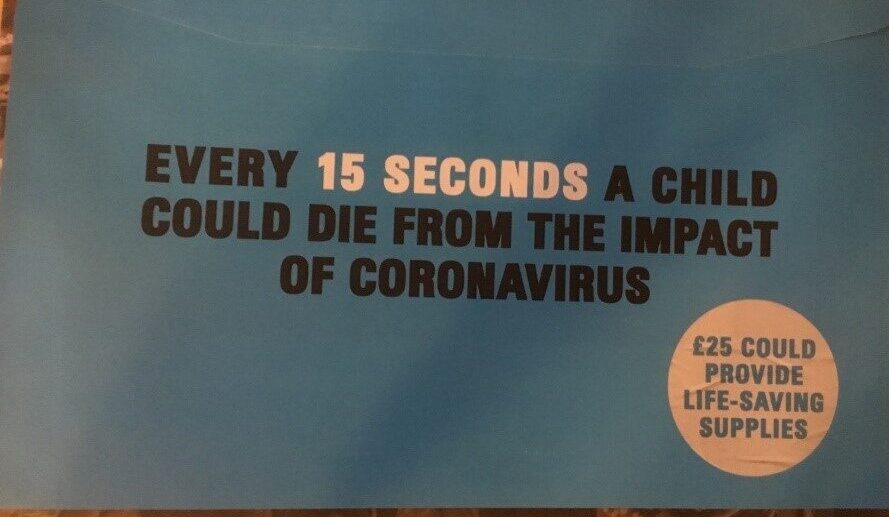Mind The Gap
Intended behavior vs. actual behavior. That they don’t match up perfectly seems to invite the misleading adage that ‘people don’t do what they say’.
In fact, the intention to do something is a great predictor of actually doing it.
This means the primary focal point should be on what influences my intention, secondarily, the gap. 
Enter the Theory of Planned Behavior, known as TPB because any theory worth its salt has an acronym.
This model has been modified over the years, poked, prodded and critiqued but it still holds up pretty well in providing answers on how we create intent and close the gap between “intent to do” and “actually do”.
The Simple Version
Three causal levers of Intention are:
- Attitude – how do I think and feel about donating to you and what do I think the outcome of my giving will be.
- Subjective Norms: what would peers and people of importance to me think about my giving
- Perceived Behavioral Control: Do I feel like it’s my decision to give or do I feel negative, external pressure to do it?

There have been nearly countless experiments examining the relative influence of these three. Most of those findings tell us that focusing your message on my feelings is more influential than subjective norms. This isn’t to suggest social proof is bogus, it isn’t. It’s just that applying it requires digging deeper, otherwise you’re better off not using it.
Either way, your fundraising is far better off, for example, featuring a donor story sharing attitudes about why they gave and the outcome of the giving, not just for the beneficiary but the donor.
Speaking of digging deeper, this is a fuller version of the model per DonorVoice. This isn’t fully reflective of all the causal paths. But here are a few bits worth noting.
- Moral norms: moral judgements influence a lot of intention and giving. But people have different moral lenses with one person thinking Charity A is morally right, the opposite. Often this morality lens puts one in-market or not in-market based on the cause – e.g., atheists won’t give to religious groups.
- Personality and Identity: These are more formative, innate parts of self. As such, they’ll often serve the basis for all the attitude and norm judgements. Conscientious people value diligence, effort and loyalty. Agreeable people want to provide care. Those innate preferences anchor attitudes about cause A or B.
- Past experience: the giving experience either delivers on expectations or it doesn’t. Success or failure to deliver on expectations has a major influence on repeating the behavior.

Putting It All Together–An Example
Let’s think about all this in examining the outer envelope below.
 .
.
Pros
- It prioritizes a moral norm – children dying is immoral
- It’s informational on a scale that is easy to process – e.g. every 15 seconds, 1 child.
Cons
- Invoking a moral norm, if done in a way that is guilt inducing is losing the battle and the war. The message might be suppressing initial giving and any chance of repeat giving.
- The attitude framing is about feeling bad for not doing the helping behavior. This is not the same as feeling good about the helping (e.g., the life-saving supplies), a point that is literally minimized and not the focal point.
This pro/con list tied to theory and evidence can/should form the basis for testing. Importantly, the testing evaluation should include 2nd gift conversion since the initial giving is not always what it seems – i.e., ‘bad’ giving that was motivated by external forces.
But this pro/con list is missing the real opportunity by limiting ourselves to what is there (limited horizon) versus what could or should be (new horizons).
Why not consider Identity and Personality as part of the “idea” matrix for testing? It’s very doable to aim a Conscientious message, at scale, separate from an Agreeable one using 3rd party data.
People are different but in predictable ways. Tailoring to match who they are on the inside while accounting for past experiences with your brand fosters more intention and closes the gap.
Kevin


